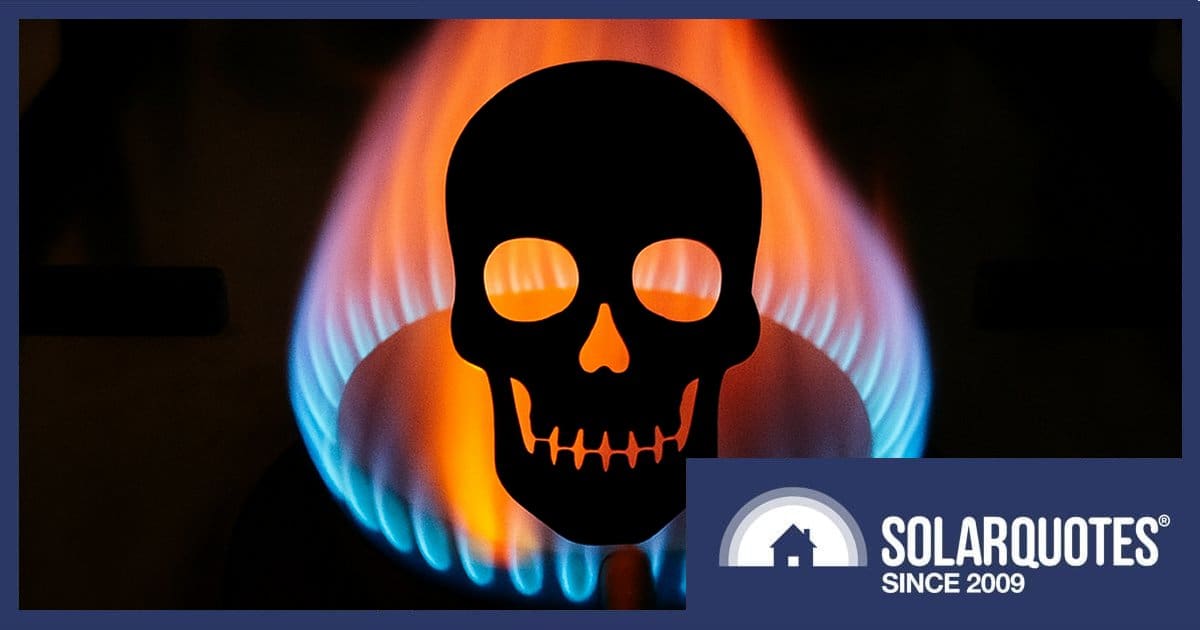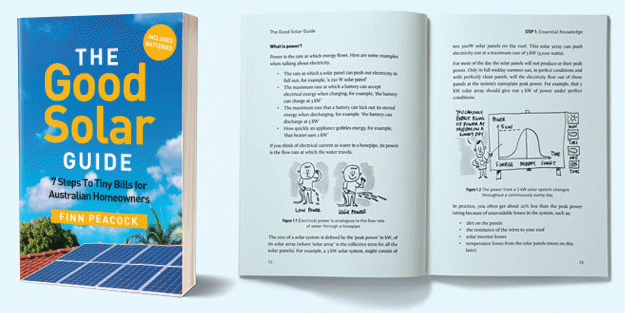Still tossing up on getting rid of gas appliances in your home in favour of electrification? Here’s another compelling reason for making the switch, particularly if you have kids – you’ll be helping to protect their health.
This doesn’t mean just protecting their health from increasing impacts of climate change, which is driven by extracting and burning fossil fuels. It’s also not a “won’t somebody please think of the children” situation seized on by pearl-clutchers wanting to turn our kids into snowflakes.
Gas has a manufactured reputation as being a clean(er) fuel. But using gas in the home for cooking releases toxic pollutants; among them:
- Nitrogen dioxide – a respiratory irritant. Causes respiratory diseases and aggravates asthma.
- Carbon monoxide – reduces the ability of blood to carry oxygen.
- Formaldehyde – carcinogen, irritation to the eyes, nose, and throat, and skin reaction.
- Benzene – carcinogen and eyes, skin and respiratory tract irritant.
Gas Benzene Emissions Elevate Cancer Risk
Benzene is a volatile organic compound classified as a Class 1 carcinogen by the International Agency for Research on Cancer (IARC). It also has many other health effects including causing fatigue, tremors, headaches, eye irritation and skin allergies. It’s pretty much odorless in small quantities, yet still dangerous. But if you smell a sweet odour similar to petrol, you’ve probably copped a mighty dose.
A study out of Stanford University in 2023 found gas stovetops and ovens produce “unsafe”1 levels of benzene. And the chemical migrated throughout homes, including into bedrooms; in some cases elevating concentrations of benzene above chronic health benchmarks for hours after the stove was used.
A more recent study to be released in the July issue of the Journal of Hazardous Materials arrived at the same sort of conclusions. This study’s results also indicate gas cooktop emissions significantly elevate cancer risks in homes with medium to high stove usage and inadequate ventilation.
The threat to kids noted was particularly troubling – the cumulative Incremental Lifetime Cancer Risks (ILTCR) for children was 1.85 times higher than for adults in most of the high and medium gas stove usage scenarios.
“Children exhibit higher inhalation rates relative to their body weight, lower overall body weight, and distinct physiological characteristics, making them more vulnerable than adults to carcinogenic risks associated with exposure to pollutants,” states the study.
Vented Hoods Help, But …
Ventilation mitigated benzene risks, with vented hoods that provide more than 75 % capture efficiency notably reducing benzene exposure in kitchens. The problem is many standard rangehoods don’t appear to have a capture efficiency anywhere near this figure (particularly on front burner use) and for ones that do, the models I looked at cost thousands of dollars to purchase and install.
We had a new rangehood fitted a few years ago that is flued to the outside. It’s disturbing how many I’ve seen aren’t – they just pump everything into the roof space, which also creates a fire risk from grease buildup. But I strongly doubt ours has anywhere near 75 % capture efficiency judging by the strong cooking smells that still waft around the house.
Protecting Kid’s Health – And Saving Money
The benzene issue is another case of prevention being better than cure, and the prevention is switching from gas to electric. For cooking, the Victorian Government says electric induction cooktops are around 3 times more efficient than gas cooktops – induction models heat with more precision, cook quicker and provide greater temperature control.
Switching from gas to an all-electric home can save hundreds of dollars a year on energy bills, with savings further boosted if you’ve installed a solar power system and even more if you also have a home battery.
“There are currently over 5 million Australian homes with gas connections,” says SolarQuotes’ Ronald Brakels. “The number that would be financially better off if they stopped using gas is, by my calculations, over 5 million.”
Ronald also recently debunked a claim that Australians would struggle to feed themselves or heat their homes without gas.
One of the barriers that discourages Australians from ditching their gas appliances is of course cost, but there are home electrification subsidies and incentives available in some states/territories to help make the switch.
Ronald also recently explained the difference between disconnecting gas and abolishing it; and how to avoid what can be huge fees to have your gas connection removed forever.
Footnotes
- The World Health Organization (WHO) states there is no safe benzene limit according to this factsheet. That document doesn’t mention gas stovetops/ovens, but was published in 2019 before more recent studies on benzene emissions associated with gas cooking were published. ↩


 RSS - Posts
RSS - Posts



Petrol used to named benzene – from memory, methyl benzene, about 60 years ago. Regarding the gas-benzene aspect, it is probably best regarded like the people sniffing it out of bottles or flagons or tins.
Regarding the safety of cooking with gas inside a house, one significant aspect is missing from the above article; leakage. A few years ago, when our gas storage water heater was replaced under warranty, the gasfitter did a mandatory gas leakage check on the household, which found the stove to be leaking, so the stove was condemned, and the pipe capped, inside the kitchen. I have, on occasion, since then, smelled gas in the kitchen. With the complexity of getting the gas stove replaced with an electric stove, which I had investigated, and, the Shonky Westralian Inadequate Stuffup electricity grid restriction of 5kW (20A) on single phase inverters and therefore on protected circuits, we have not had an operational stove in the house for a few years, now. Run out of characters…
The USA University studies noted did focus on gas leaking from stoves when not in use. They found this to be pretty common. They even came to Australia and tested houses and commercial sites to determine whether this issue was something to do with brands in the USA or more widespread.
Petrol is still called Benzin in German and Danish, but there’s only a modest amount of the ring-molecule benzene in it, as it can be sold for more, for use in petrochemicals. So petrol is largely hexane, heptane, and octane – all straight-chain hydrocarbons, much less chemically active. And yes, benzene is largely accepted to be carcinogenic – definitely to be avoided, especially long term. It can also be absorbed through the skin, not just inhaled.
If old memory serves, Nitrogen Dioxide dissolves in water, such as on the lung lining, to form Nitric and Nitrous acids, the former being a **Very** strong acid, which will very aggressively destroy tissue. It is entirely unsurprising that even trace amounts will cumulatively cause breathing abnormalities. (And I’m really not sure the nitrated tissues aren’t then carcinogenic to varying degrees.)
The Romans used lead pipe for water supply (cf plumbing) – that’s carcinogenic and damages brains. We learn. Slowly. Very slowly.
I’m sure I read somewhere that LPG is slightly better emissions-wise.
I wonder if the health risks are the same as gas?
We have an 8.5ltr bottle plumbed into our hob, but it doesn’t get much use now that we have a portable induction hob and spare electrons. It might see a little more action during winter.
Sure, our children’s health and a sustainable biosphere are important considerations, but won’t someone think of the wok hei.
They talk of changing to Electric cooking. How do we get electricity? It’s mainly from Coal and Gas.
There for their research report is not accurate in telling us about cleaner electricity.
Hi Michael,
SA is leading the charge with renewables uptake as seen in this graph.
Therefore the rest of Australia will follow. Nationally we’re already up to 40% as seen in this link.
When necessary, SA gets electricity from Vic.
Hi Ron,
When it’s cheap (ie windy) Victoria gets 5% of it’s electricity from SA. They’re slowly giving up on the idea that dirt in Gippsland needs to be dug up and burnt.
https://explore.openelectricity.org.au/energy/vic1/?range=1y&interval=1w&view=discrete-time&group=Detailed
In Australia, we have this wonderful invention,. named household rooftop photovoltaic systems, which generates clean electricity, using solar energy. Owner/occupiers of houses, are generally allowed to install and use them.
We also have (where people do not fight the use of clean energy) wind farms, that produce cleanly generated electricity from wind power.
We also have (hopefully) the upcoming subsidising of household Battery Electric Storage Systems, so that householders can store and use cleanly generated electricity.
So, YOU too, can have cleanly generated electricity. If you want it.
Glen, when I google “flat bottom wok” the top row of hits pictures 8 of ’em, from $40 to $250, depending on your wallet weight. The cast iron ones, especially, ought to be ideal for the induction hob. We aren’t restricted to only using a repurposed disc plowshare – modern metalworking has mastered the trick of banging a flat on it.
Mind you, attempting to remodel the one you have might be a dubious project. 😉
Mind you, induction won’t singe the hair off your forearms, so no simultaneous beauty(?) treatment.
P.S. Michael, ingrained denialism is perhaps incurable, but while saying it can’t be done, deniers can still watch all those who are already doing it. At less cost, even before climate costs destroy national budgets in a few decades. (Less asthma and cancer too, once gas is ditched.)
One of my daughters was diagnosed with Asthma in 2019 at the age of 2, after 2 trips to emergency in the middle of the night to have steroid injections to help her breathe normally.
I saw an article on Ars Technica about the Gas Cooking/Heating studies that a few of the USA universities were conducting.
We made the decision to stop using our gas heater and switch to electric and see what happened.
My daughter hasn’t even had to use any Ventolin since we made the switch…
The payback period to change from gas is simply far too long for me. I’m 77 so I might have 10 years more in my house. I’ll stick with gas cooking and instantaneous gas water heating for as long as possible.
Too be honest, I don’t care about the alleged health benefits of going electric.
While I don’t care how my dinner gets cooked, I love how easy it is to clean up the flat surface of the cheap portable induction cooktop,… and that it has easy variable heat settings,…. and that it has a timer so i can do other things without having to attend to the gas, and that I don’t even need to turn it off but just take my pot off the hot plate. I use it for convenience,…and that it is cheap to buy and very cheap to run, especially when the pv is generating,.. and has very low fire hazard.
I have one of these;
https://www.kmart.com.au/product/induction-cooker-black-43324170/
cooks as fast as a gas wok burner, and, the KMart version of one of these
https://www.bunnings.com.au/devanti-electric-convection-oven-bake-benchtop-rotisserie-grill-45l_p0403023
Mine has a 2 hour timer and cost about $75. Unfortunately, KMart has stopped selling the benchtop oven.
One thing that I read, a couple (or so) years ago, written and published by a cooking personality, was that she was surprised, with what was available, that more people had not adopted “split level stoves” (quite expensive – cost about 2 1/2 times as much as a vertical stove), saving the user from having to bend down to use and clean the ovens in the vertical stoves.
With the above, quite apart from healthier air quality in the house, and, the greater ease of cleaning (and, KMart have these – https://www.kmart.com.au/product/double-hot-plate-42685432/ (I also have one) we can have full benchtop cooking for <$300.
Ron Beckett: – “Too be honest, I don’t care about the alleged health benefits of going electric.”
Gas is only going to get scarcer and more expensive in the coming years.
Per the AEMO’s Gas Statement of Opportunities – March 2025, page 50 includes Figure 27:
Key Data (as at 31 Dec 2024) for the Australian east coast gas market:
2024 actual consumption: 1,962 PJ
2P developed reserves: 16,982 PJ R/P = 8.7 years; plus
2P undeveloped reserves: 14,987 PJ R/P = 7.6 years
2C resources: 37,915 PJ
The Australian east coast (i.e. QLD, NSW, ACT, VIC, TAS & SA) gas market has a gas reserves-to-production of less than 17 years.
It seems US gas supplies, and by extension global gas supplies, are only going to get scarcer and more expensive in the coming years.
https://blog.gorozen.com/blog/the-depletion-paradox
My gas cooktop uses two 8.5kg bottles a year, so about $50. Replacing the whole standalone 90cm oven plus new power circuit is about $5k. So about a 100 year payback to change over. Not happening
Gas oven?
If not why not place an induction hotplate on top of the gas hob?
Lots of people doing that over at My Efficient Electric Home.
Or just buy a portable induction hob and keep it handy and keep the gas hob for spare. This is our solution.
Hi Mark,
As a child who’s mother wasn’t sure she’d get to take her 4yo home from hospital, a kid who was excluded from school activities, a teen who struggled for breath because of asthma, I’d say 5 grand is cheap.
The first funeral that I attended (I have only attended a few), was when I was about 13 or 14, when a “next door” neighbours’ son, who was about the same age as me, and, who had attended primary school with me, who had bad asthma, died in a violent asthma attack at the local hospital. Whilst in that area, we did not have gas cooking and heating (although, we had kerosine heating in the winter, with unflued, internal heating, and, kerosine cooking, when the power went off for about three months, due to a bad weather event that badly affected the country), asthma is not something to be taken lightly.
And, the risk of gas poisoning, through leakages, quite apart from the poisoning from fumes from burning gas, is a significant risk to all in a household.
How many householders do as they should, and have all gas lines and appliances and connections, checked for leakages, and adequate ventilation, every year or so, or, whatever it is supposed to be? At what cost?
What price life?”
I am disconnecting from the gas and over the last few weeks the gas guys have been running back and forth across the property trying to work out where the 95 year-old iron gas pipes are. My wife had a birthday yesterday and my daughter lit a birthday candle. We are still here so I suppose that narrows down the area of search.
“And now for something completely different”…
I am wondering how many people in Australia, and, how many people who read this blog and this article and these comments, are aware of this….
https://copperhome.com/products/charlie
https://copperhome.com/
With the price of an AGA cooker (https://agaaustralia.com.au/product/aga-era-110-electric-with-induction-hob-cooker-2/), the price of the Copper Charlie stove is perhaps, not so comparatively expensive, in comparison (especially, with what the Charlie stove is).
If only we would have white goods manufacturing (especially to such an advanced level as the Copper Charlie) in Australia.
From memory, they are (or, were) based in California, what was (under Arnold Schwarzenegger’s governorship) the advanced part of the USA.
Finn has there been any thought to considering the use of heat banks with solar systems
They can be heated during the day after the hws and a relay and timer can switch them to night rate after midnight for any top up that is required
Top up control from charge knob
Hi Mike,
Not a real analysis but we have seen them. https://www.solarquotes.com.au/blog/electricity-consumption-mystery-solved/